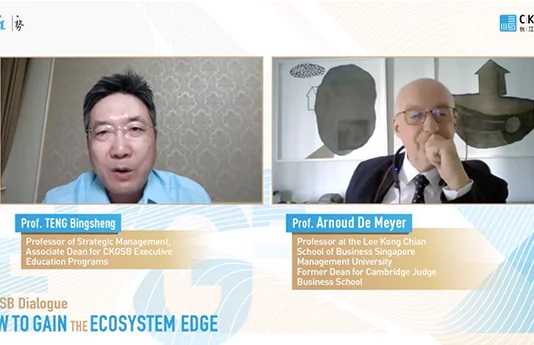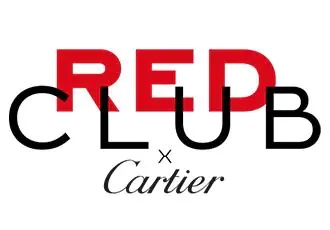From opportunistic growth to systematic growth, consumer brands enter a new era
By LI Yang, Associate Professor of Marketing, Executive Academic Director for MBA Program and Executive Education Programs
In the past two years, a slew of new domestic consumer brands has quickly become popular – like beverage brand, Genki Forest, oatmeal brand Wangbaobao, underwear brand, Ubras and cosmetic brand, Perfect Diary to name a few.
Li Yang, the Associate Professor of Marketing, Executive Academic Director for the MBA and Executive Education Programs at Cheung Kong Graduate School of Business (CKGSB), has been researching about corporate branding and marketing data modeling, and has consulted for Tmall, Tencent, Yonghui Superstore, Haier and other organizations.
In his opinion, this rapid change itself is unique for consumer goods. Due to the changing preferences and aging demographics, the longevity of most products, or even brands, may not last long.
Li thinks that with the rapid development of China’s economy in the last three to four decades, consumers now need to learn to accept the process of continuous innovation within brands. This is the first step for people to understanding this phenomenon.
Generation Z – people born mostly in the 1990s – are emerging as a new consumer group, and its needs are becoming more and more personalized and diversified. Due to their changing demands, Li says a new trend for brands is to gather people with similar interest online to socialize and exchange ideas.
In recent years, terms such as two-dimensional elements, e-sports, fashion items, garage kits, China-chic, and circular culture are growing in popularity, representing the changing preference of consumers.
As a professor of business school, Li observed another reflection of this trend – the difference between founders of newer brands to the previous generation of founders.
Many entrepreneurs today were born after China’s opening up and are accustomed to influences from global brands and technology. They have shown characteristics that are completely different from those of the previous generation.
Behind the rapid changes in products and brands, Li believes that the real underlying changes will be more noteworthy. “Management style, corporate culture and product design, are all changing,” Li Yang said. “When consumers and entrepreneurs are being stratified, naturally, consumer goods will also change to meet market demands.” Li believes that in the future, Chinese companies similar in scale to Coca-Cola and Nestle, will appear. On this basis, Li believes it is imperative that decision makers and investors “find the optimal input-output ratio.”
“In the area of consumer goods, Chinese companies are transitioning from opportunistic growth to a systematic growth, a watershed moment when considering the potential of consumer brands emerging among these newer start-up companies.”
Professor Li Yang provides further analysis on new consumer brands in the Q&A below:
Q: A number of new consumer brands have recently opted for IPOs – How do you feel about this new trend?
Li: The life cycle of some specific new consumption phenomenon will not stay around for long, which many people think is a problem. However, I don’t think this is a bad thing.
I feel like it’s similar to pop music. What was hot today may not be 5 years down the way. But does this stop us from making music? I don’t think so.
When it comes to creating new products, we need to constantly innovate, adapt to the needs of the consumer group, and optimize marketing and communication methods.
Q: The current rise of new brands increasingly relying on the power of community sharing and influencers. How do you view this branding model?
Li: Use a small group of influences to attract a large group of people. In the early days, brands had limited marketing budgets and thus couldn’t put a lot of capital towards traditional marketing methods. Thus, influencer marketing took off. In the early stages, influencer marketing may not have been particularly effective. What companies and brands did was to create unique products and company culture as part of their branding strategy.
Once brands made it big, this form of marketing may not be sustainable to shift the company’s growth from opportunistic to systematic. For example, from the perspective of capital, does the company have good investment or investment institutions that can provide strategic synergy?
Q: How should these new companies build itself to be resilient?
Li: When it comes to branding, top of mind is what drives recognition. Take Coca-Cola as an example, its marketing channels are ubiquitous, and to a large extent, has helped everyone establish brand recognition. However, in the early stages, the core strength of a product should always be the product itself.
Q: What is the difference between the new generation of entrepreneurs and traditional entrepreneurs?
Li: It could be hard for entrepreneurs from new brands and the Internet industry to have things in common with entrepreneurs from traditional manufacturing and real estate. Although they both run business, the two groups lack common languages. The entrepreneur group is also constantly stratified because of the differences in world views, life and values as well as their understanding of business.
Q: Why are there no century-old companies like Coca-Cola among Chinese consumer brands?
Li: It is important to keep in mind that China’s market economy has only been around for thirty to forty years. In developed countries, the marketization of consumer goods has been developing for a hundred years.
Take the carbonated beverage industry as an example, many companies imitated the Coca-Cola, and now these small and medium-sized brands still exist in the United States.
They may only be available in certain US regional markets, so most consumers don’t even know they exist. And these are the brands that survived market competition.
From this perspective, a century-old brand is a result of the marketization of consumer goods. As long as consumption industry continues to exist, we believe that a group of top brands with a long-term foundation will be born in the end.
Traditionally, China is a manufacturing giant with very few recognizable brands. I believe a new wave of Chinese brands and Chinese products will emerge and thrive. Companies are beginning to recognize the power of branding.






















